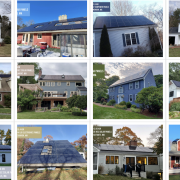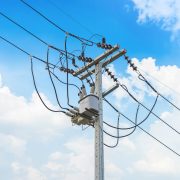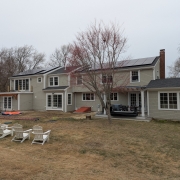Harnessing solar energy to fight local hunger
By Louis Medina
June 12 2017
Read the original article Here
Electricity is energy. Fuel is energy. Food is energy. Manpower is energy.
All those forms of energy are essential to the running of Community Action Partnership of Kern’s Food Bank, whose food distribution poundage increased by more than 50 percent, from 9 million in 2013 to 13.6 million in 2016, to keep up with local hunger needs amplified by job losses in the agriculture and oil industries due to the drought and plunging oil prices during the same time frame.
Electricity is needed to keep the Food Bank office and warehouse operational — including 40,500 cubic feet of walk-in fridge and freezer space to ensure proper storage of fruits, vegetables, meat, and other fresh and frozen foods.
The Food Bank’s fleet of trucks needs fuel to get nutritious food to well over 100 partnering distribution locations throughout Kern County’s 8,200 square miles.
The more than 1 million pounds of food the Food Bank distributes monthly helps keep thousands of folks — seniors, families with children, homeless individuals, at-risk veterans — throughout the community from going hungry.
Our staff members and volunteers provide the manpower to collect, sort and transport the food that is either purchased or donated for the benefit of the food insecure among us.
Well, the CAPK Food Bank will soon be using another type of energy — Kern County’s abundant solar power — to significantly reduce its electricity costs.
Thanks to generous funding that includes grants from the city of Bakersfield and Kern County Community Development Block Grant program, The Bakersfield Californian Foundation and Southern California Gas Company, the Food Bank warehouse will soon boast 504 roof-mounted photovoltaic panels that will generate 254,787 kilowatt-hours of energy annually — enough to reduce its electricity costs by close to $50,000 a year.
This will result in savings and operational efficiencies that can be reinvested into the acquisition and distribution of food for the hungry.
“The grants that are allowing us to do this work are like a gift that keeps on giving,” said CAPK Executive Director Jeremy Tobias. “From now until the lifespan of these panels ends, we’re going to be receiving that money back every year. Instead of writing a check for utilities, we can spend that amount on food. It’s like an investment, almost. It’s a gift for the entire community.”
And grant dollars are staying in Kern County, as the work has been contracted to local firm A-C Solar, a subsidiary of A-C Electric Company. A-C Solar Energy Manager Jeff Petrini, who has assisted a number of nonprofits, including churches, with their commercial solar installation, knows how important grant dollars are for these organizations.
“Solar is an expensive proposition and having a zero-out-of-pocket financing option or a grant is really the only way it can happen for nonprofits,” he said, because they cannot enjoy the tax breaks for-profit companies do on their solar installs.
“The cost of energy is going up and up on a yearly basis,” Petrini said. “Being able to help nonprofits to better utilize the funds they have, for the purpose that they’re designed for, is important to us.”
The actual date for the “switch throwing party” for the CAPK Food Bank’s solar project has not been set yet, but is anticipated for some time in mid-to-late summer. CAPK is looking forward to making it a community event to inspire other nonprofits to follow suit and think outside the box to generate savings that can be invested in the real work at hand: serving people.






